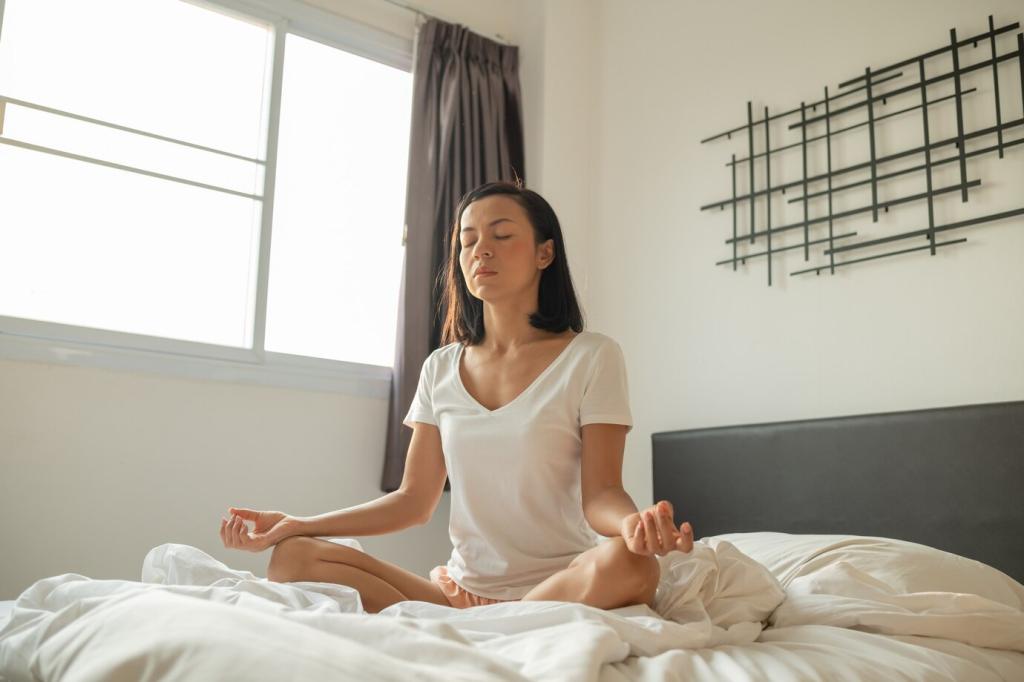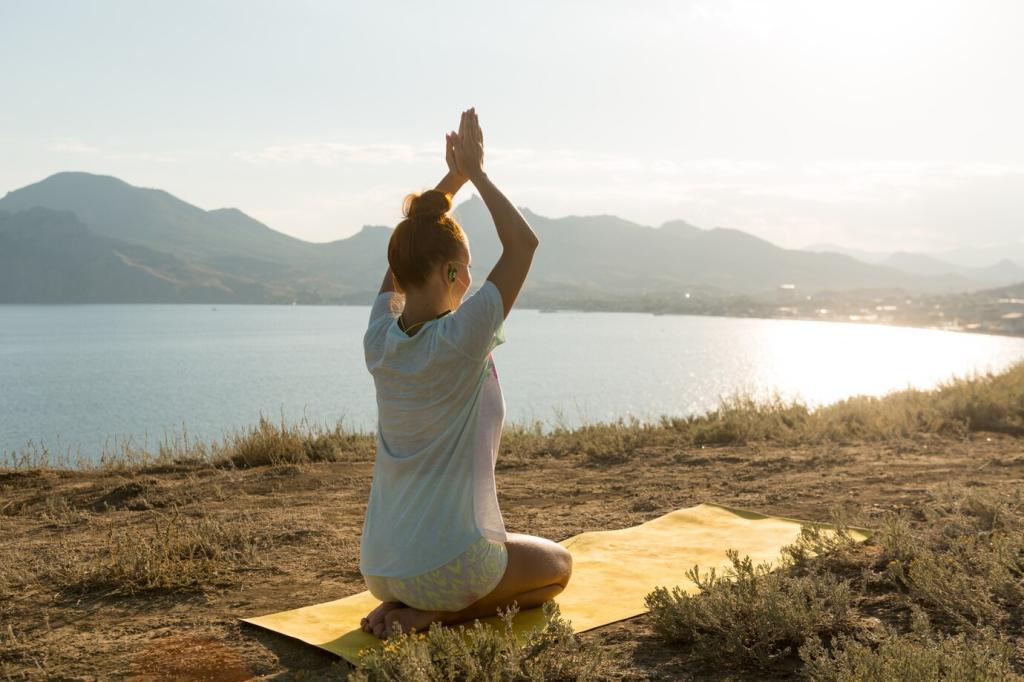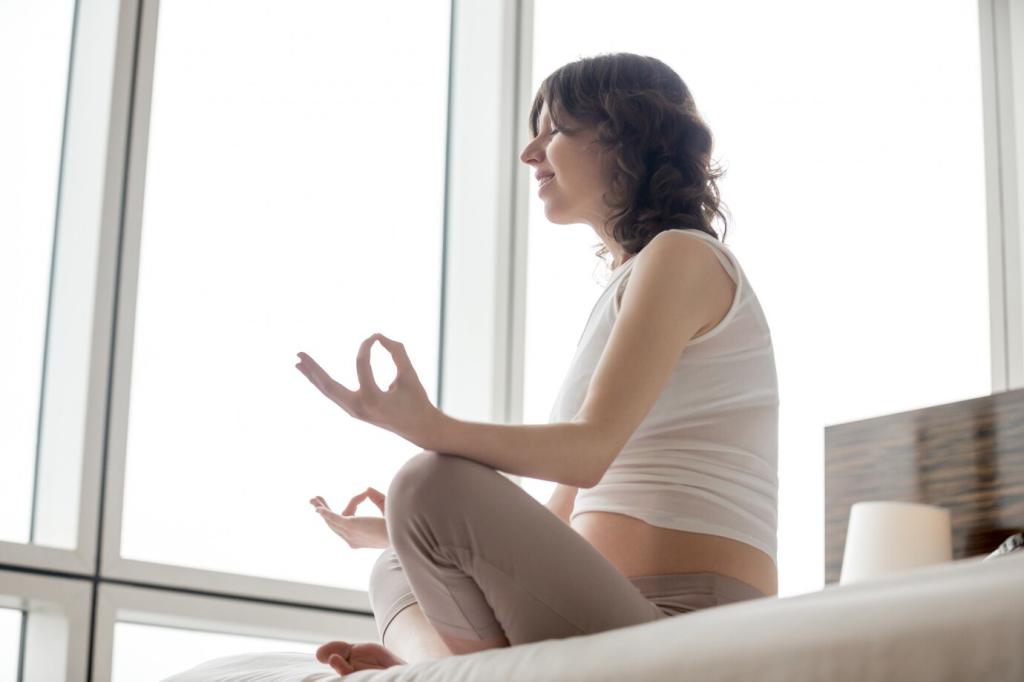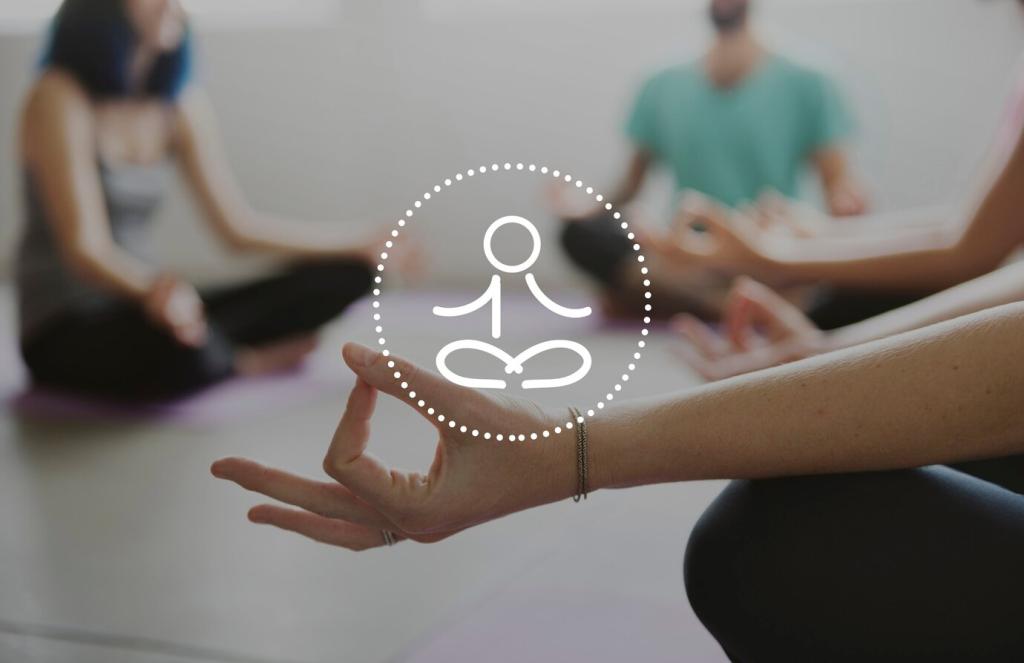Mindfulness Meditation Practices for Calmness
Embracing mindfulness meditation can cultivate a profound sense of calm and tranquility in our daily lives. This web page explores the foundational concepts, practical techniques, and transformative benefits of mindfulness meditation, offering you an in-depth understanding and practical guidance to harness its calming power. Whether you are new to meditation or seeking to deepen your practice, these insights will help you nurture lasting peace within.
Foundations of Mindfulness Meditation

What is Mindfulness?
Mindfulness is the practice of being fully present in the moment, paying nonjudgmental attention to your thoughts, feelings, bodily sensations, and the environment around you. Rooted in ancient contemplative traditions, mindfulness has been widely adopted and adapted in modern psychology and wellness practices for its ability to reduce stress and enhance awareness. By anchoring attention to the here and now, mindfulness helps quiet mental chatter and disrupts patterns of rumination that fuel anxiety or restlessness. Practicing mindfulness consistently lays the groundwork for a calm, centered mind and a more supportive inner dialogue.

The Role of Breath
Breathing is fundamental to all mindfulness meditation practices. When you consciously focus on your breath, you direct awareness away from distractions and toward a gentle anchor that is ever-present and accessible. Observing each inhalation and exhalation, without trying to change its rhythm, can immediately evoke a sense of grounding and calm. Deep, mindful breathing activates the parasympathetic nervous system, which counteracts the body’s stress response and promotes relaxation. Over time, this simple technique trains your mind to return to calm even in the midst of life’s storms.

The Science Behind Calmness
Numerous scientific studies have shown that regular mindfulness meditation rewires the brain’s neural pathways, enhancing areas related to emotional regulation, attention, and stress management. Mindfulness lowers cortisol—the body’s primary stress hormone—while increasing feelings of well-being and emotional balance. Neuroimaging research reveals that meditation strengthens the prefrontal cortex, supporting better decision-making and self-control. Understanding these biological underpinnings not only demystifies the calming effects of meditation but also motivates continued practice for long-term mental and physical health benefits.
Preparing for Meditation
Creating a Tranquil Space
A peaceful setting helps signal to your mind and body that it’s time to relax and focus inward. Choose a quiet area free from distractions, where you feel safe and comfortable. This space could be as simple as a cushion in a corner of your room or a dedicated meditation area adorned with calming elements like soft lighting or gentle scents. The act of preparing your environment becomes an important ritual, anchoring your intent to find calmness and supporting your practice with a sense of sacredness and respect.
Setting an Intention
Before beginning your meditation, it’s beneficial to clarify your intention for the practice. This could be as straightforward as wanting to feel more at peace, letting go of stress, or cultivating gratitude. Setting an intention sets the tone for your session, guiding your awareness and helping you navigate moments when your mind drifts. It also imbues your practice with deeper meaning, turning a simple meditation exercise into a purposeful journey toward calmness and inner harmony.
Posture and Comfort
How you sit or position your body can greatly influence your meditation experience. Find a posture that feels stable, dignified, and yet relaxed. Whether sitting cross-legged on the floor, using a meditation cushion, or resting in a supportive chair, ensure your spine is upright but not rigid. Hands can rest gently on your knees or lap, eyes either closed or softly focused. Comfort is crucial—any distracting discomfort might disrupt your focus. By paying attention to posture, you lay the physical groundwork that supports mental and emotional stillness.
Guided Meditation Techniques
Body Scan Practice
The body scan is a foundational mindfulness meditation technique that systematically brings awareness to different parts of the body. Lying down or sitting comfortably, you gently direct your attention to the crown of your head and gradually move downward, noticing sensations in your scalp, face, shoulders, arms, torso, legs, and feet. The aim is not to change or judge sensations but to acknowledge them as they are, fostering acceptance and presence. By slowing down and tuning into each area, the body scan encourages deep relaxation and releases physical and mental tension, leaving you feeling peaceful and reconnected to yourself.
Lovingkindness Meditation
Lovingkindness meditation, also known as metta, cultivates feelings of goodwill, compassion, and warmth toward yourself and others. Beginning with yourself, you silently repeat phrases like “May I be safe, may I be happy, may I be healthy, may I live with ease.” Gradually, your attention expands to include loved ones, acquaintances, and even those with whom you have difficulty. Through this process, lovingkindness meditation dissolves barriers between you and others, replacing judgment or resentment with empathy and calm. With regular practice, lovingkindness builds emotional resilience and inner tranquility even in challenging interactions.
Mindful Breath Awareness
Breath awareness is the cornerstone of mindfulness meditation. This technique involves bringing focused attention to the natural rhythm of your breathing, observing each inhale and exhale with gentle curiosity. Whenever your mind wanders—as it inevitably will—you simply acknowledge the distraction and return your focus to the breath. This repeated redirection anchors your awareness in the present and creates space from anxious or intrusive thoughts. Practiced over time, mindful breathing becomes a refuge you can access anytime, fostering calmness in both meditation and daily life.
Integrating Mindfulness into Daily Life
Mindful Walking
Mindful walking is a practice that turns simple movement into a meditative experience. As you walk, slow your pace and focus intently on the sensations of your feet making contact with the ground, the shifting weight of your body, and the natural rhythm of your breath. Let your attention rest gently on these sensations, returning to them each time your mind drifts. Walking mindfully not only grounds you in the present, but also offers a refreshing break from sedentary life and frantic thoughts. Over time, it becomes a moving meditation, infusing calmness into the rush of daily routines.


Mindful Eating
Eating mindfully transforms a routine activity into an opportunity for meditation and gratitude. Begin by observing the colors, textures, and aromas of your food, then taste each bite slowly, chewing with awareness and savoring the flavors. Notice the sensation of hunger arising and subsiding, and reflect on the sources of your food. This heightened presence not only enhances your enjoyment and digestion but also interrupts habits of mindless eating or emotional snacking. Mindful eating fosters respect for your body’s needs and invites calm presence into every meal.

Dealing with Restlessness
Restlessness is a common challenge, especially in the early stages of meditation practice. Your mind may bounce from thought to thought, or your body may feel fidgety and uncomfortable. Instead of resisting these sensations, try to observe them with friendly curiosity. Acknowledge the urge to move or the distraction, then gently return to your chosen point of focus—such as the breath or body sensations. Over time, you’ll discover that restlessness tends to subside as your capacity for stillness grows. Remember, simply returning your attention, again and again, is itself a powerful practice.

Addressing Judgmental Thoughts
Judgmental thoughts often arise in meditation, about the practice itself or your perceived “performance.” You might think, “I’m not doing this right” or “My mind is too busy.” Whenever you notice self-criticism or discouragement, recognize it as a normal part of human experience. Label your judgments as “thinking” and let them pass like clouds in the sky, without getting attached to their content. Cultivating a nonjudgmental attitude allows you to approach meditation with greater kindness and patience, ultimately nurturing a more peaceful and accepting mind.

Managing Expectations
Expecting immediate results or a particular outcome can create frustration and disappointment. Mindfulness meditation is a lifelong journey, and its gifts often unfold gradually and subtly. Remind yourself that every session, no matter how distracted or challenging, contributes to your growth. Let go of striving for perfection or “emptying the mind”—instead, appreciate each moment of awareness you bring to the practice. By releasing attachment to specific results, you create space for genuine calmness and clarity to arise in their own time.
Previous
Next
The Benefits of Consistent Practice
Consistent mindfulness meditation helps you become less reactive to stressors and more adaptable in the face of challenges. By observing your emotions without being swept away by them, you build emotional resilience—the ability to recover quickly from setbacks. Meditation nurtures self-awareness and self-compassion, helping you respond to life’s ups and downs with equanimity and grace. When practiced regularly, these qualities weave calmness and confidence into the very fabric of your experience, supporting healthier relationships and deeper contentment.
Deepening Your Meditation Journey
Gradually increasing the duration of your meditation sessions can unveil deeper layers of calm and insight. Start by adding a few minutes each week, always listening to your body and maintaining comfort. Longer sittings enable you to observe the ebb and flow of thoughts, sensations, and emotions with greater patience and clarity. While challenges may arise during extended practice, they often give way to profound stillness and self-discovery. Persistence and gentle curiosity are your guides as you navigate these enriching inner landscapes.

